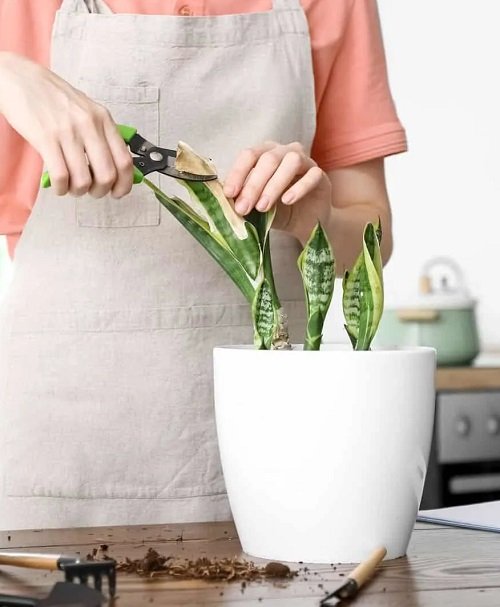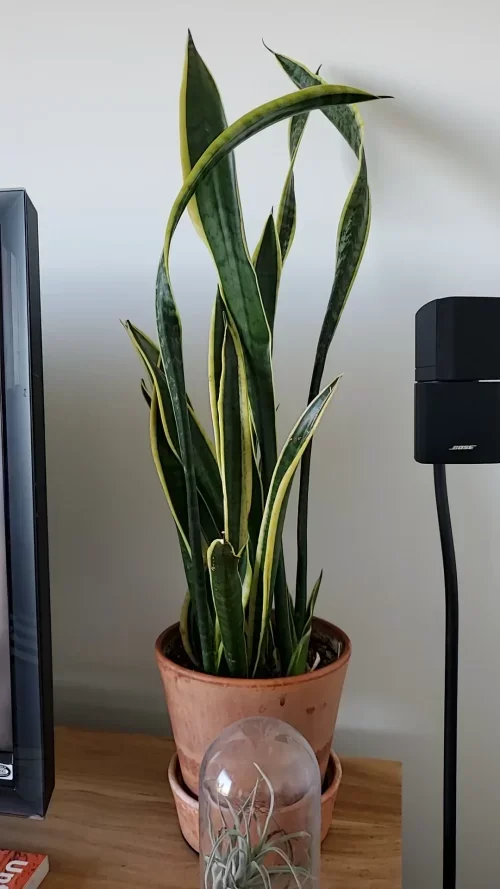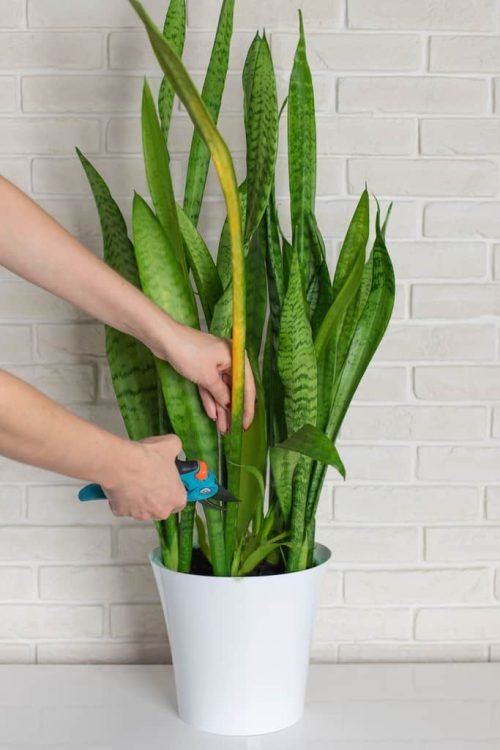Not sure When To Prune A Snake Plant to keep it tidy and free from pests? This guide will give you a step-by-step walkthrough to do it correctly!
Snake plant doesn’t need much of a pruning but it is required for its upkeep—to help it reach its full potential for growth and appearance.
Learn How to Force a Snake Plant to Produce Pups here
When To Prune A Snake Plant
The best time to prune your snake plant is during the growing season, which typically falls in the spring and summer months and early fall. This period is ideal because the plant is actively growing and can recover more quickly from pruning.
Note: You can prune the plant any time of the year whenever you spot dead or damaged leaves. You can also prune the plant to propagate them from the leaf.
Signs that Show Your Snake Plant Needs Pruning
1. Yellow or brown leaves: Prune these leaves to avoid the spread and direct the energy towards healthy growth.
2. Overgrowth: If your snake plant is growing too large for its space, with leaves that are growing way too tall, or are overcrowding each other, it’s a sign that a root division and pruning is needed.
3. Damaged Leaves: Look for damaged, discolored, or dying leaves. These can drain energy and should be removed.
4. Shape and Appearance: If you notice that your snake plant is losing its symmetrical shape or certain leaves are growing in an undesirable direction or bending, pruning can help restore its aesthetic appeal.
5. Pest Infestation or Disease: In case of pest infestation or disease, removing the affected leaves can prevent the problem from spreading.
When pruning, use clean, sharp scissors or pruning shears. Make your cuts near the base of the leaf, being careful not to damage the healthy parts of the plant.
Learn How to Get a Snake Plant to Bloom here
Step-by-Step Guide to Pruning
Step 1: Inspect the Plant
Check for dead, discolored, misshapen, or withered leaves. These indicate that your plant is in poor health and needs to be trimmed.
Step 2: Start Snipping
Position your pruning shear or scissors near the base of your chosen leaf. Make a clean cut, making sure not to harm a healthy leaf.
Step 3: Aftercare
Once the pruning is complete, remove all the diseased or damaged leaves. This is the last step in the process and will help you ensure your snake is free from unwanted growth.
20 Best Places to Keep a Snake Plant in the House
Caring for Snake Plant After Pruning
- It is essential to adjust your watering schedule after pruning. Too much water can cause root rot, a common problem with snake plants. Let the soil dry out a bit between watering spells. Make sure to check the moisture level of the soil before you water.
- Snake plants like indirect sunlight, so place the plant where it gets bright but filtered sunlight after pruning to maintain its ideal lighting. Direct sun exposure can burn the leaves.
- Look for any unusual markings on the leaves, webbing, or any signs of insects. If you notice any problems, take care of them right away so they don’t spread to other areas of your plant.






What is the best height for the leaves of the plant.